Closer view of Ceres shows multiple white spots
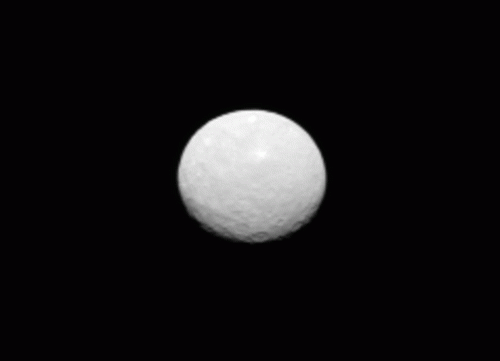
NASA's Dawn spacecraft has acquired its latest and closest-yet snapshot of the mysterious dwarf planet world Ceres. These latest images, taken on Feb. 4, from a distance of about 90,000 miles (145,000 km) clearly show craters – including a couple with central peaks – and a clearer though still ambiguous view of that wild white spot that has so many of us scratching our heads as to its nature.
Get ready to scratch some more. The mystery spot has plenty of company.
Take a look at some still images I grabbed from the video which NASA made available today. In several of the photos, the white spot clearly looks like a depression, possibly an impact site. In others, it appears more like a rise or mountaintop. But perhaps the most amazing thing is that there appear to be not one but many white dabs and splashes on Ceres' 590-mile-wide globe.
-
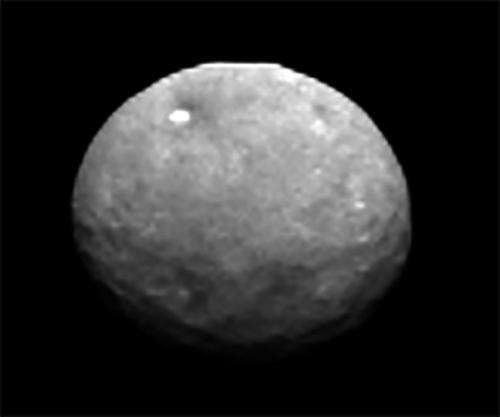
Here the spot appears more like a depression. Frost? Ice? Credit: NASA/JPL-Caltech/UCLA/MPS/DLR/IDA -
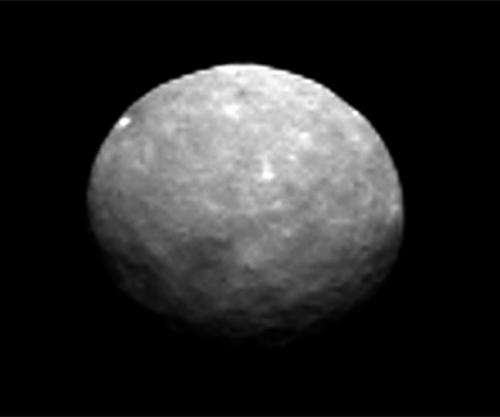
Here the white spot is at the asteroid’s left limb. You can also see lots of additional smaller spots that remind me of rayed lunar craters. Of course, they may be something else entirely. Credit: NASA/JPL-Caltech/UCLA/MPS/DLR/IDA -
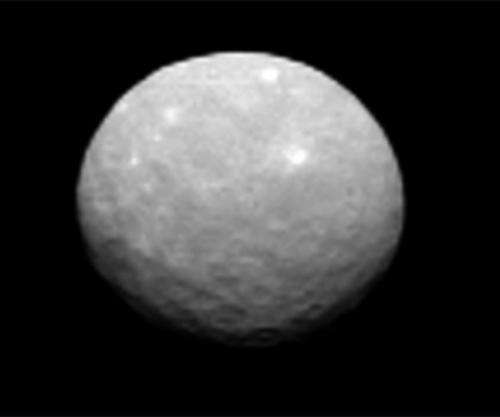
Look down along the lower limb to spot a crater with a cool central peak. Note also how many white spots are now visible on Ceres. The mystery spot is a little right of center in this view. Credit: NASA/JPL-Caltech/UCLA/MPS/DLR/IDA -
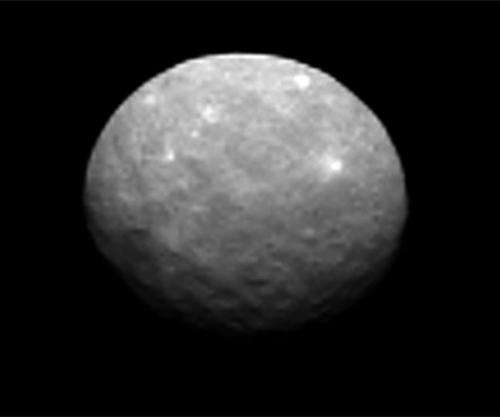
Our mystery white spot is further right of center. Is it a rise or a hole?Are the streaks rays for fresh material from an impact the way the lunar crater Tycho appears from Earth? Credit: NASA/JPL-Caltech/UCLA/MPS/DLR/IDA -
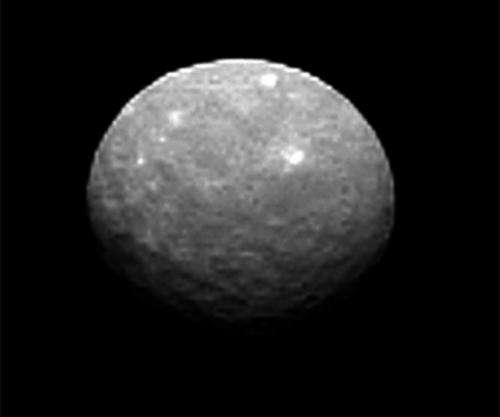
Yet another view of the mystery spot. Credit: NASA/JPL-Caltech/UCLA/MPS/DLR/IDA
Now let's take a look at an additional NASA animation of Ceres made using processed images. As the spot first rounds the limb it looks like a depression. But just before it disappears around the backside a pointed peak seems to appear. Intriguing, isn't it?
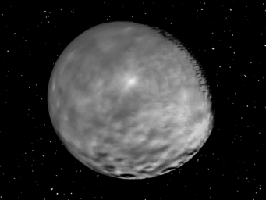
Source: Universe Today





















